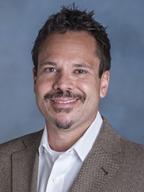
Biography
I joined the faculty at Cal State Northridge in January 2000 and am one of the original founding members of the Department of Child and Adolescent Development. Since joining the faculty, one of my consistent priorities has been expanding undergraduate students’ exposure to evidence-based practice regarding the developmental processes of children, adolescents and young adults.
Where did you go to school?
I earned both my Ph.D. and Master’s degree in Educational Psychology with an emphasis in Child & Adolescent Development at UC Santa Barbara. I earned my B.A. at UC Berkeley with majors in Psychology and Social Welfare and a minor in Education. I grew up in the South Bay area of Los Angeles and attended Los Angeles Unified schools for my K-12 education. My K-12 experiences as a student have been influential in my interest in becoming a university professor in the field of child and adolescent development.
What's your area of specialty?
My professional expertise revolves around understanding the ways children and teens think about their ethnic and cultural group membership and how this impacts their academic engagement, their personal & professional goals, and their attitudes towards people from ethnic & cultural groups other than their own. One of my strongest passions is helping students identify and reach their long-term goals. As an undergraduate student, I had never thought about becoming a professor mostly because I had no idea what I would need to do to become one. As an African American faculty member of mixed heritage, as well as being first in my family to receive a doctorate, I am highly committed to creating viable pathways for students to continue on to advanced degree programs, and especially for students typically underrepresented in higher education.
In what other ways are you involved in the campus and larger community?
Outside of class, I enjoy collaborating with students, professionals, and community members. I have had the privilege of working with student leaders in university organizations including the Cal State Northridge chapters of Phi Delta Kappa (the professional association in Education), the Child and Adolescent Development Association (CADA), and Kappa Kappa Gamma (one of the National Panhellenic organizations), as their faculty advisor.
Selected Publications
Taylor, A., Wakefield, W.D., and Tate, D. (2016). Achievement values. In. V. Zeigler-Hill, T.K. Shackelford (eds.). Encyclopedia of Personality and Individual Differences,488-90.
Wakefield, W.D. (2010). Instructor Manual & Resources (The World of Children, Cook & Cook (2nd ed.)).New York: Pearson Higher Education.
Wakefield, W. D., and Hudley, C. (2007). Ethnic and racial identity and adolescent well-being. Theory into Practice, 46, 2, 147-154.
Wakefield, W. D., and Taylor, A. Z. (2006). Teaching racial identity. In Y. Jackson (Ed.) Encyclopedia of Ethnic Minority Psychology. Newbury Park, CA: Sage Publications.
Wakefield, W. D., and Belanger, J. (2006). Ethnic identity development measures. In Y. Jackson (Ed.) Encylopedia of Ethnic Minority Psychology. Newbury Park, CA: Sage Publications.
Wakefield, W. D. (2005). Understanding privilege in American society. In E. Chen and G. Omatsu (Eds.), Teaching about Asian Pacific Americans. Walnut Creek, CA: Altamira Press.
Wakefield, W. D., and Hudley, C. (2003). African American male adolescents' preferences in responding to racial discrimination: Effects of ethnic identity and situational influences. Adolescence.
Wakefield, W. D., Britsch, B., Cho, S., Smith, T., & DeMorat, M. (2001). Multiple perceptions of children's aggression: Differences across neighborhood, age, gender, and perceiver. Psychology in the Schools, 38, 43-56.
Hudley, C., Britsch, B., Wakefield, W. D., Smith, T., DeMorat, M., & Cho, S. (1998). An attribution retraining program to reduce aggression in elementary school students. Psychology in the Schools, 35, 271-282.
